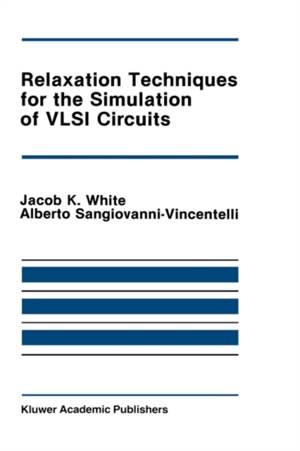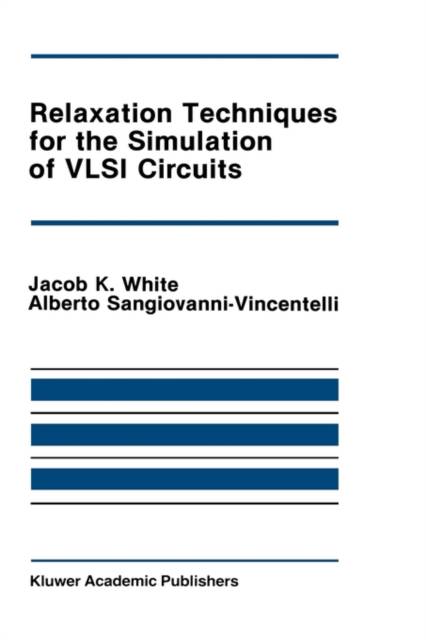
- Retrait gratuit dans votre magasin Club
- 7.000.000 titres dans notre catalogue
- Payer en toute sécurité
- Toujours un magasin près de chez vous
- Retrait gratuit dans votre magasin Club
- 7.000.0000 titres dans notre catalogue
- Payer en toute sécurité
- Toujours un magasin près de chez vous
Relaxation Techniques for the Simulation of VLSI Circuits
Jacob K White, Alberto L Sangiovanni-Vincentelli
156,45 €
+ 312 points
Format
Description
Circuit simulation has been a topic of great interest to the integrated circuit design community for many years. It is a difficult, and interesting, problem be- cause circuit simulators are very heavily used, consuming thousands of computer hours every year, and therefore the algorithms must be very efficient. In addi- tion, circuit simulators are heavily relied upon, with millions of dollars being gambled on their accuracy, and therefore the algorithms must be very robust. At the University of California, Berkeley, a great deal of research has been devoted to the study of both the numerical properties and the efficient imple- mentation of circuit simulation algorithms. Research efforts have led to several programs, starting with CANCER in the 1960's and the enormously successful SPICE program in the early 1970's, to MOTIS-C, SPLICE, and RELAX in the late 1970's, and finally to SPLICE2 and RELAX2 in the 1980's. Our primary goal in writing this book was to present some of the results of our current research on the application of relaxation algorithms to circuit simu- lation. As we began, we realized that a large body of mathematical and exper- imental results had been amassed over the past twenty years by graduate students, professors, and industry researchers working on circuit simulation. It became a secondary goal to try to find an organization of this mass of material that was mathematically rigorous, had practical relevance, and still retained the natural intuitive simplicity of the circuit simulation subject.
Spécifications
Parties prenantes
- Auteur(s) :
- Editeur:
Contenu
- Nombre de pages :
- 202
- Langue:
- Anglais
- Collection :
- Tome:
- n° 20
Caractéristiques
- EAN:
- 9780898381863
- Date de parution :
- 30-11-86
- Format:
- Livre relié
- Format numérique:
- Genaaid
- Dimensions :
- 156 mm x 234 mm
- Poids :
- 485 g

Les avis
Nous publions uniquement les avis qui respectent les conditions requises. Consultez nos conditions pour les avis.






